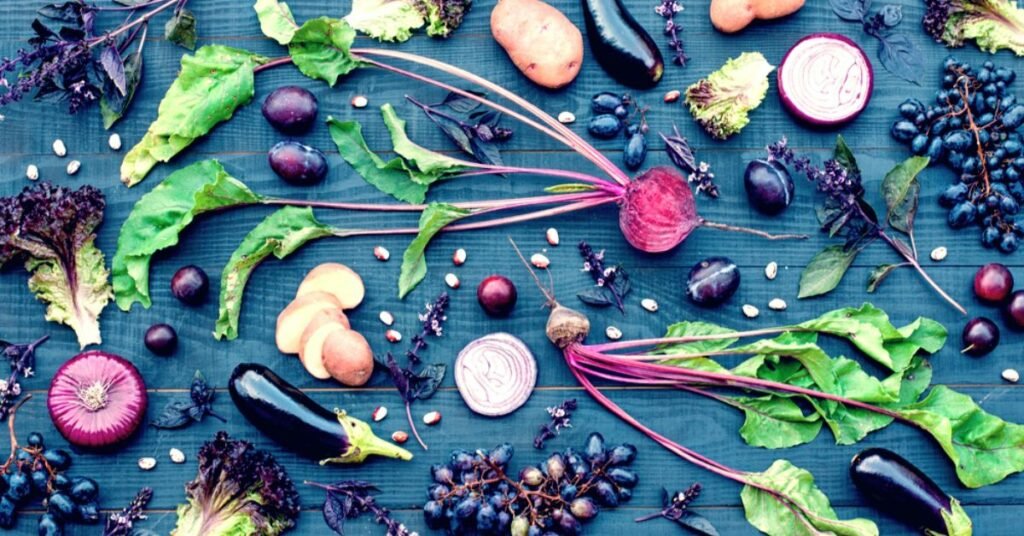When it comes to colorful eating, blue foods stand out for their uniqueness and health benefits. Unlike green or red foods, naturally blue foods are rare, but they are rich in antioxidants, vitamins, and minerals.
From blueberries to blue corn and spirulina, these foods are not only visually striking but also packed with nutrients that support heart health, brain function, and overall wellness.
What Are Blue Foods?
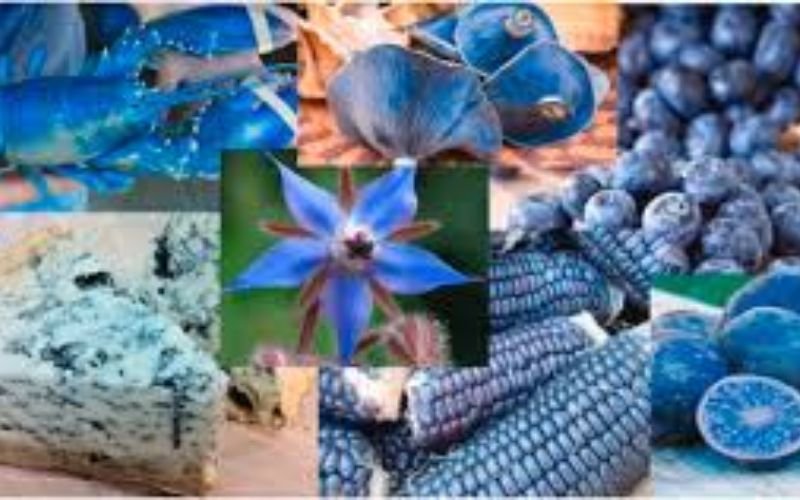
Blue foods are naturally occurring fruits, vegetables, and plants that have a blue or purple hue due to compounds like anthocyanins (a powerful antioxidant). These pigments not only give the food its color but also provide health-protective benefits.
Examples of Blue Foods
1. Blueberries
- Rich in antioxidants and Vitamin C
- Boost brain health and support immunity
2. Blue Corn
- Used in tortillas and chips
- Higher in protein and antioxidants compared to yellow corn
3. Blue Potatoes
- Contain anthocyanins that may lower blood pressure
- A colorful alternative to regular potatoes
4. Butterfly Pea Flower
- Used in teas and drinks for its vibrant blue color
- Known for anti-aging and calming properties
5. Spirulina (Blue-Green Algae)
- A superfood high in protein, iron, and antioxidants
- Commonly consumed in smoothies and supplements
6. Blue Cheese
- Fermented cheese with blue mold veins
- Rich in calcium and probiotics (should be eaten in moderation)
Health Benefits of Blue Foods
Rich in antioxidants
Supports heart & brain health
Improves skin and immunity
Fights inflammation
Boosts energy
🍽️ Top 5 Blue Food Recipes
1. Blueberry Smoothie
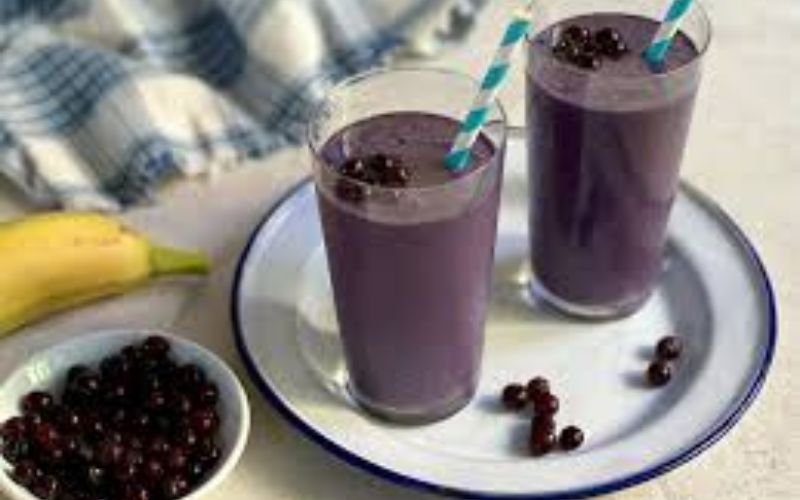
Ingredients:
- 1 cup fresh blueberries
- 1 banana
- 1 cup Greek yogurt
- ½ cup almond milk
Instructions:
A refreshing breakfast or snack!
Blend all ingredients until smooth.
Serve chilled.
2. Blue Corn Tortilla Chips with Salsa

Ingredients:
- Blue corn tortillas
- Olive oil spray
- Salt (to taste)
Instructions:
- Cut tortillas into triangles.
- Brush with olive oil and sprinkle salt.
- Bake at 180°C for 10–12 minutes until crispy.
- Serve with salsa or guacamole.
3. Mashed Blue Potatoes
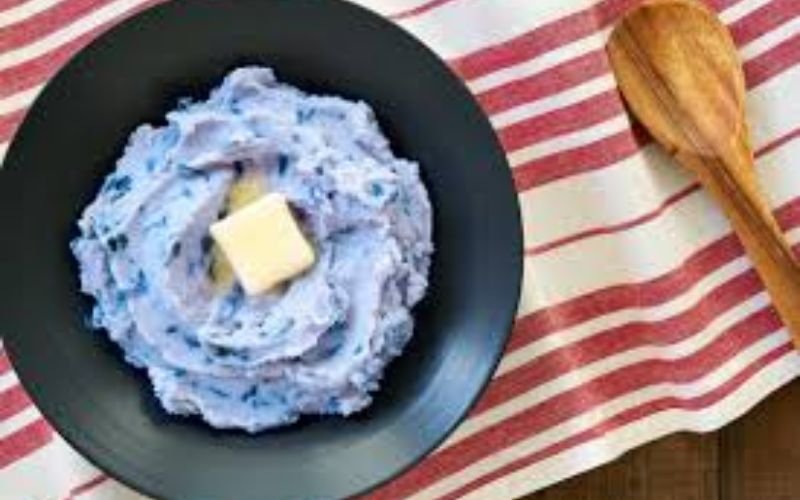
Ingredients:
- 4 blue potatoes (boiled)
- 2 tbsp butter
- ¼ cup milk
- Salt & pepper to taste
Instructions:
- Mash boiled potatoes with butter and milk.
- Add salt and pepper.
- A colorful twist to classic mashed potatoes!
4. Butterfly Pea Flower Tea
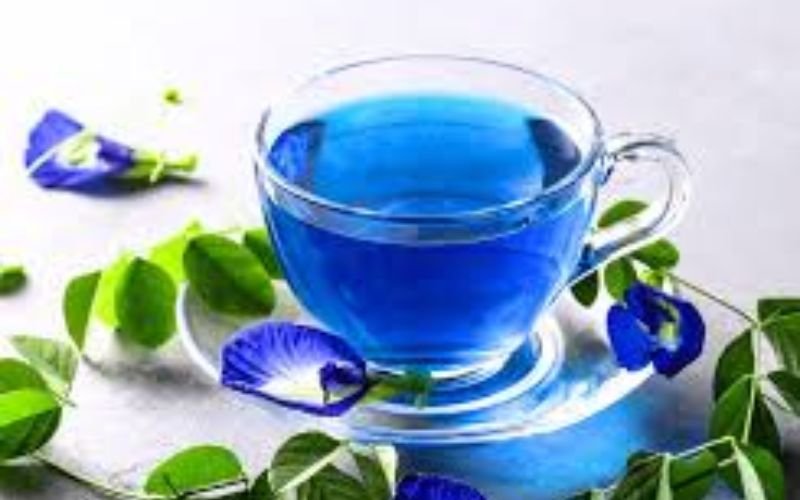
Ingredients:
- 5–6 dried butterfly pea flowers
- 1 cup hot water
- Honey & lemon (optional)
Instructions:
- Steep flowers in hot water for 5 minutes.
- Add honey for sweetness.
- Add lemon juice to watch the tea turn purple!
5. Spirulina Energy Balls
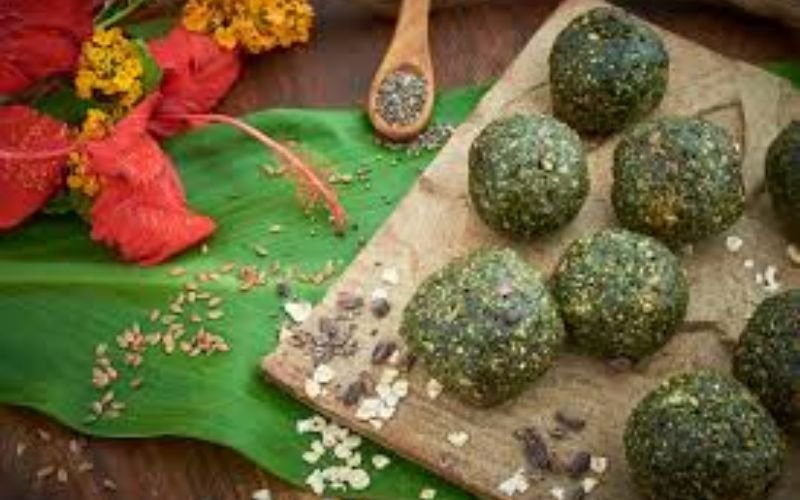
Ingredients:
- 1 cup oats
- 2 tbsp peanut butter
- 2 tbsp honey
- 1 tsp spirulina powder
Instructions:
- Mix oats, peanut butter, honey, and spirulina.
- Roll into small balls.
- Refrigerate for 1 hour before serving.
Quick Table: Blue Foods & Benefits
| Blue Food | Key Nutrients | Main Health Benefit |
|---|---|---|
| Blueberries | Vitamin C, Anthocyanins | Brain & immune support |
| Blue Corn | Protein, Fiber | Energy & digestive health |
| Blue Potatoes | Anthocyanins, Potassium | Heart health, blood pressure |
| Butterfly Pea Tea | Antioxidants, Flavonoids | Relaxation, skin health |
| Spirulina | Protein, Iron, B12 | Energy & immunity boost |
| Blue Cheese | Calcium, Probiotics | Bone & gut health |
Conclusion
Blue foods are not just rare and beautiful but also nutrient-rich powerhouses. From fresh blueberries to spirulina and butterfly pea tea, these foods support your heart, brain, skin, and overall immunity.
By adding recipes like blueberry smoothies, blue corn chips, mashed blue potatoes, butterfly pea tea, and spirulina energy balls, you can make your diet both healthy and exciting.
FAQs
Q1: Why are some foods naturally blue?
They contain anthocyanins, natural antioxidants that give them a blue color.
Q2: What are some common blue foods?
Blueberries, blue corn, blue potatoes, butterfly pea flower, spirulina, and blue cheese.
Q3: Are blue foods good for health?
Yes, they are rich in antioxidants, vitamins, and minerals that protect against diseases.
Q4: Can blue foods help with memory and brain health?
Yes, blueberries and other anthocyanin-rich foods improve memory and brain function.
Q5: How can I use spirulina in recipes?
Add it to smoothies, energy balls, or juices for a nutrient boost.
Q6: Is blue cheese healthy?
In moderation, yes—it provides calcium and probiotics but is high in fat and sodium.

